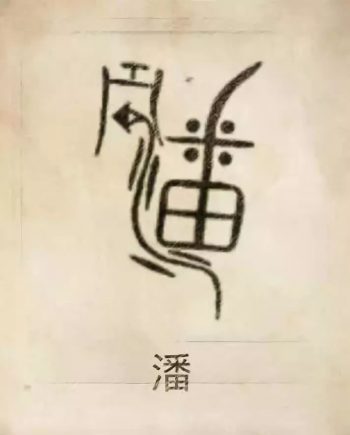The Pan(pān) surname is a name steeped in history, cultural richness, and multicultural integration. From ancient feudal states to modern-day global communities, the Pan lineage reflects the resilience and adaptability of Chinese civilization.

Ⅰ、Origins of the Pan Surname
The Pan surname has diverse roots, reflecting China’s historical blend of ethnicities and traditions:
1. The Ji Clan
The primary origin traces back to Ji Sun , a descendant of King Wen of Zhou .Ji Sun was enfeoffed in Pan (modern-day Shaanxi) during the Western Zhou Dynasty (1046–771 BCE). His descendants took the fief as their surname, forming the earliest Pan family.
2. The Mi Clan
During the Spring and Autumn period, Pan Chong, a member of the royal family of the State of Chu, was awarded a fiefdom for military exploits. His descendants adopted their ancestor's name as their surname, thus forming the "Mi family Pan clan".
3. Ethnic Integration
During the Northern Wei Dynasty (386–534 CE), the Xianbei tribe’s Poluoluo clan adopted "Pan" as their Han surname. Later, groups like the Manchu, Taiwanese Indigenous peoples, and others also adopted the name during cultural assimilation.
Ⅱ、Historical Figures and Contributions
The Pan surname boasts luminaries across politics, literature, and science:
Pan Chong (Spring and Autumn Period)
A pivotal statesman in Chu, he helped consolidate royal power and became a symbol of political strategy.
Pan Yue
namely Pan An, this Western Jin Dynasty (266–316 CE) poet and official was famed for his literary genius and striking appearance, earning the idiom "fruit-throwing admirers"to describe his charm.
Pan Ni: a literary figure of the Western Jin Dynasty, known as "the two Pans" together with Pan Yue, and famous for promotingucianism in his work.
Pan Mei (925–991 CE)
A Northern Song general, Pan Mei played a controversial role in the Yang Family Generals legends, symbolizing both military valor and historical complexity.
Pan Zhencheng: The richest merchant of the Qing Dynasty in Guangzhou's Thirteen Factories, he dominated the trade of raw silk between China Britain, donated to build the Haczang Temple in Guangzhou, and promoted cultural exchanges between China and foreign countries.
Pan Jianwei: A quantum physics pioneer dubbed the "Father of Quantum Communication."
Pan Xiaoting: A world-renowned billiards champion, elevating China’s sports profile.
Ⅲ、Cultural Significance
1. Clan Identity and Values
Regional Prestige: The Pan surname is closely tied to Xingyang (Henan), Guangzong (Hebei), and Henan regions, reflecting its migration and influence.
Family Teachings: Pan clan mottos like "Loyalty, Filial Piety, and Scholarly Pursuits"emphasize Confucian ethics and education.
2. Art and Literature
Pan Yue’s poetry and essays, such as "Mourning the Deceased", shaped classical Chinese literature.
Pan Tianshou, a 20th-century painter, revolutionized traditional ink art.
3. Architectural Heritage
The Pan Clan Ancestral Hall in Anhui and Jiangsu, dating to the Ming Dynasty, stands as a cultural monument and UNESCO-protected site.
Ⅳ、Social Impact and Global Reach
1. Migration Patterns
From its Shaanxi origins, the Pan surname spread southward during the Tang and Song dynasties, reaching Fujian and Guangdong. By the Ming era, Pan clans settled in Southeast Asia, Taiwan, and beyond.
2. Modern Influence
Philanthropy: Figures like Pan Jinyao, a Shanghai charity advocate, highlight the clan’s enduring commitment to social welfare.
3. Global Diaspora: Over 200,000 Pan descendants in Taiwan trace roots to Indigenous assimilation, while communities in Malaysia and the Philippines preserve ancestral traditions.
4. Cultural Symbols
The Pan surname is embedded in idioms like "Pan Mei’s Loyalty" and folklore, reflecting its dual role in heroism and historical critique.
Ⅴ、Conclusion
The Pan surname is a living tapestry of China’s multicultural history—from feudal enfeoffments to global modernity. Its legacy of adaptability, intellectual pursuit, and ethical rigor continues to inspire, proving that a name is more than an identifier;it is a vessel for cultural continuity.